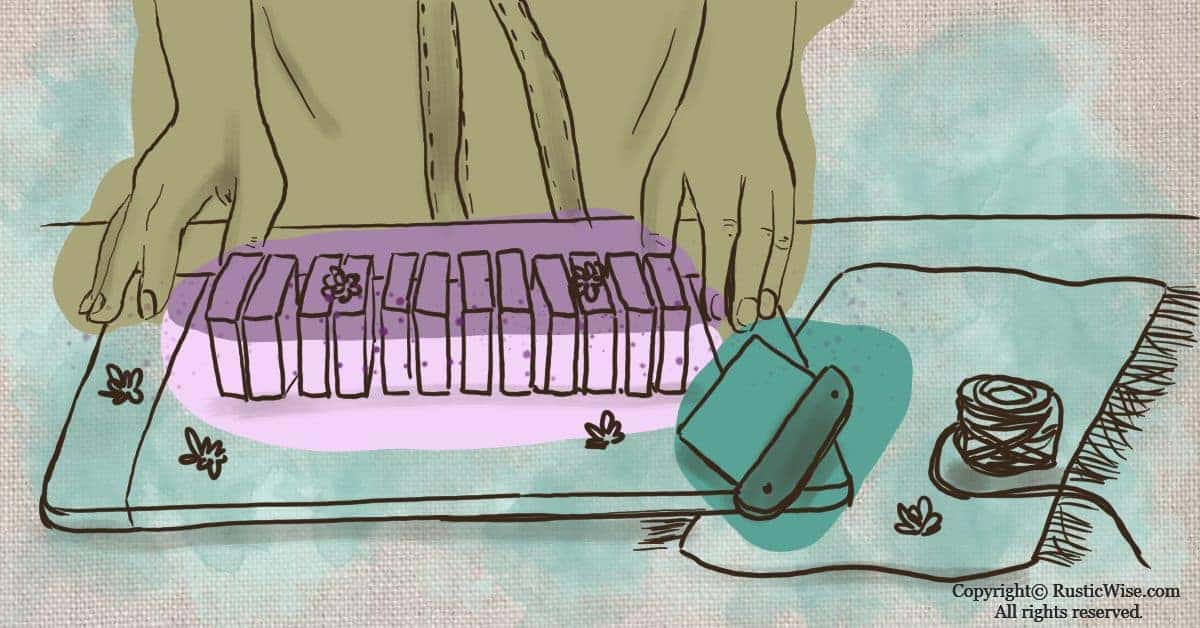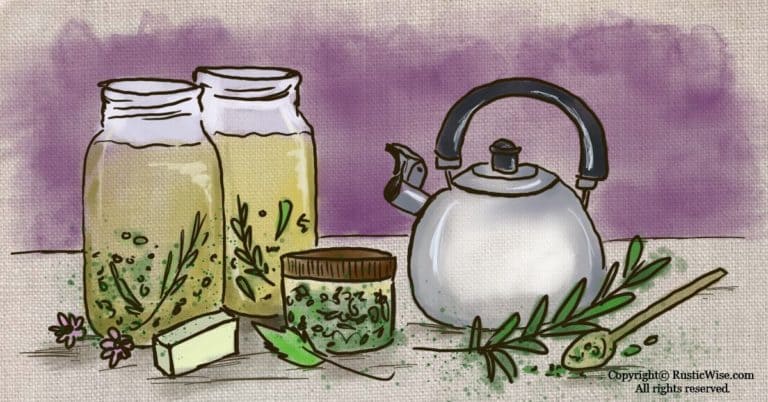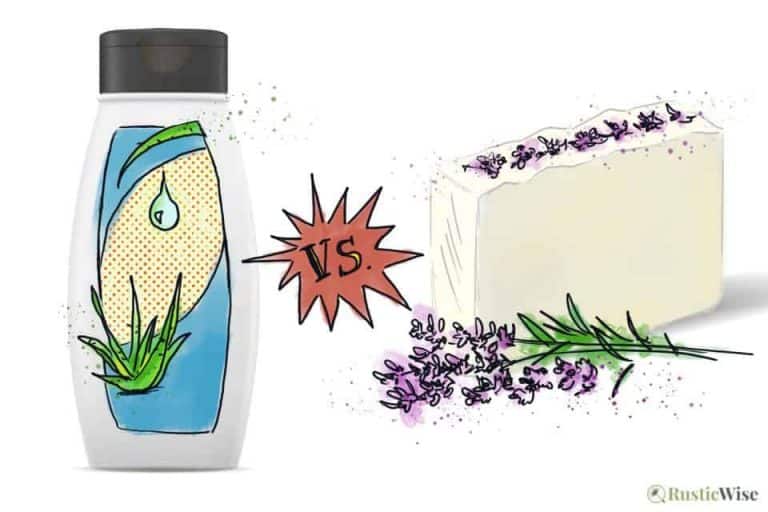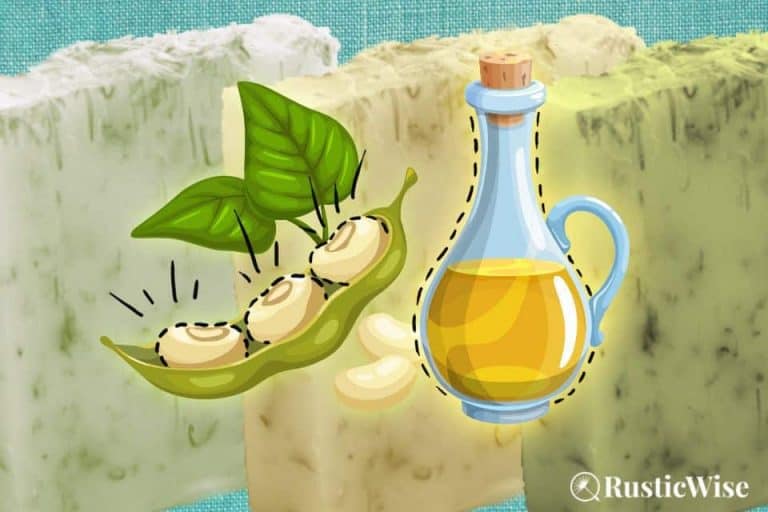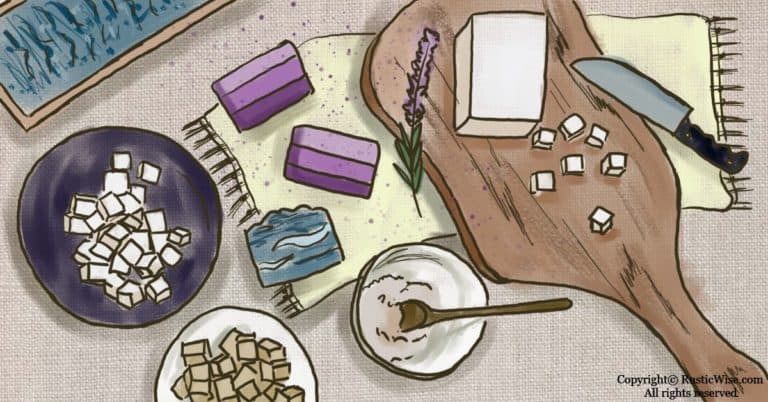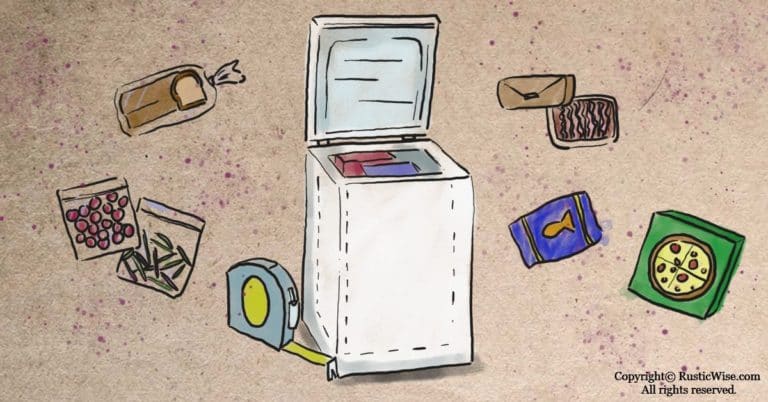How to Cut a Bar of Soap Without It Crumbling
RusticWise is supported by its readers. When you purchase through links on our site, we may earn an affiliate commission. As an Amazon Associate, we earn from qualifying purchases. Thank You!
Cookies crumble; soap shouldn’t. But sometimes you experience crumbling when cutting soap. This can be frustrating if you’re making handmade soap bars, or have a large soap bar that needs to be cut into smaller pieces. What causes homemade soap to crumble? Can we stop it from happening at all? We’ll go over how to cut a bar of soap without it crumbling. We’ll also look at different ways you can prevent crumbling, plus a few different ways to cut your soap.
When cutting soap at the right time (shortly after unmolding), it should be easy to work with, but some bars are harder than others. If your soap is crumbling, there’s a reason why this happens, and we’ll cover the main reasons below.
Or, if you’re hoping to cut a large block of store-bought soap maybe into convenient travel-sized bars, we’ll cover this too.
Let’s dive in!
Reasons for crumbly homemade soap and how to fix it
If your soap crumbles easily, there are a few reasons why this might happen.
Waiting too long before cutting
The first reason is the age of your soap batch, or how long it’s been since you unmolded it and cut into bars. If you’ve waited a while to make some cuts (say several days or even weeks), then chances are that there may be too much dry time before cutting.
Tip: Aim to unmold and cut when your soap is firm. This is generally between 24–48 hours after pouring. To be safe when cutting cold process soap, wear a pair of gloves in case the soap hasn’t fully saponified. Unmolding your soap too quickly may result in soda ash developing.
Caustic soap
Crumbly soap may be a sign of excess lye in your soap (which is why it’s always a good idea to don gloves when first handling soap!).
Tip: Test the pH of your soap to ensure it’s not caustic. If it’s caustic, don’t throw it out just yet—you can rebatch the soap. Remember to wear a pair of gloves! Shred or grate your soap into small chunks and melt the soap down again in a slow cooker. In the book Making Soap by Kathrin Landmann, she suggests readjusting your mixture by adding extra oil or liquid as needed. Yogurt or quark are two suggestions for adding to your soap batter to make make it more smooth.
Soaping at cooler temperatures
If you’re combining the lye mixture and oils at temperatures below 100 degrees Fahrenheit (38 degrees Celsius), it could contribute to crumbly soap.
Tip: Aim to soap at slightly warmer temperatures between 110–120 degrees Fahrenheit (43–49 degrees Celsius).
Not fully melting oils when combining
When melting oils, ensure you thoroughly melt all oils to a liquid state. Some oils like palm oil may take more time to fully melt than other oils. If not melted fully, there may be separation of the stearic acids.
Tip: Take your time to slowly mix and melt all oils before combining with your lye mixture.
Dull cutting tool
Not the sharpest knife in the drawer…sometimes it comes down to the type of knife or cutter you’re using and whether it’s sharp enough.
Tip: Avoid serrated knives (which may cause soap to crumble), and always use a sharp blade.
Some fragrance oils
Some fragrance oils don’t play nice. In these cases, the fragrance oil you added to the soap may have affected the texture and consistency of your soap mixture.
Tip: Read up on plenty of reviews before spending money on fragrance oils. It’s sometimes hard to pinpoint exactly why a soap has crumbled, but if you read reviews of other crafters who used the same fragrance oil, and they experienced problems too, it’s likely that your problem is caused by this.
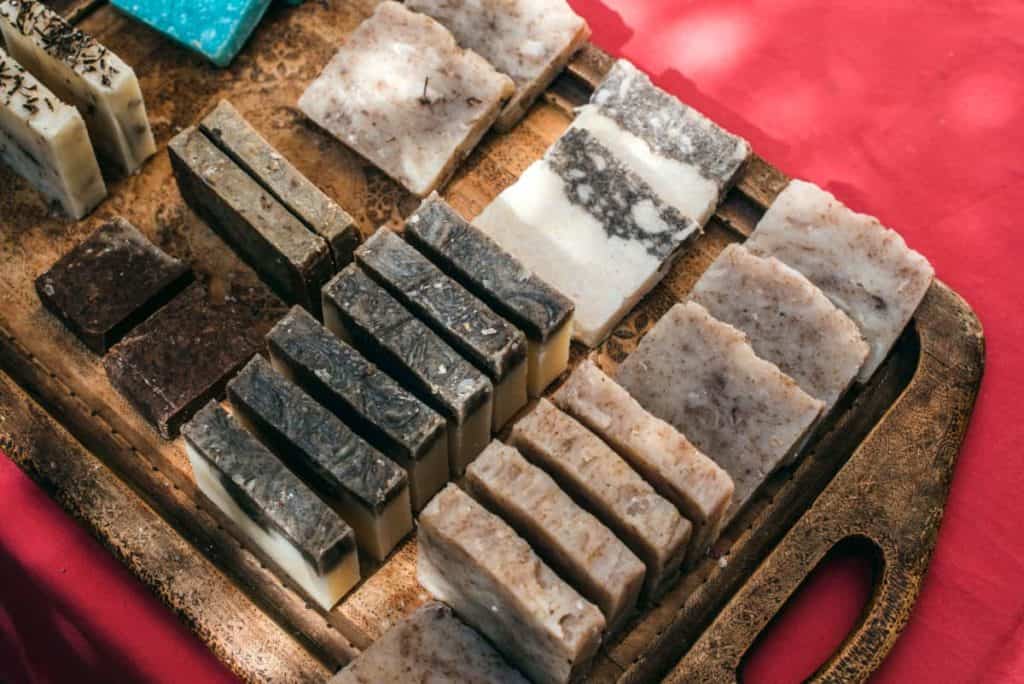
Tips for homemade soap: how to cut a bar of soap without it crumbling
Let’s take a look at a few different ways you can cut homemade soap without it splintering or crumbling.
With handmade soap, the first most important step is to cut at the right time: typically within 24–48 hours after pouring. If you followed your recipe correctly, and didn’t forget to add any oils, then it comes down to your cutting methods to prevent crumbling.
Cutting tools and methods
There are so many different ways to cut a loaf of homemade soap. You can buy soap cutters, or go the DIY-route and use items you have at home.
Soap wire cutter: A store-bought soap wire cutter is the Cadillac of cutting tools and probably worth every penny if you’re planning on making lots of soap. Simply place an entire loaf of soap onto the base, line it up properly, and lower the wire top down. Presto—you’ll have 9–12 straight cut bars of soap in an instant.
Soap cutting box: This is a wooden box with built-in notches for you to evenly cut your soap with. You’ll need a dough scraper to fit through the slots as most knife blades are too thick.
Knife: Sometimes with softer soaps, you need to work with a skinnier, smaller knife to prevent it from sticking. It’s important to choose the right knife. The best knives to use are sharp, unserrated, and have a flat surface (with little tapering). Most sharp chef’s knives work well. If your soap is crumbling a lot when cutting with a knife, you can try warming up the blade slightly (see the Knife heating method, below).
Cheese wire: If you have cheese wire handy at home, it works well to slice through a loaf of soap as easy as well, cheese.
Sawing miter and dough scraper: If you already have a sawing miter at home, it can double as a soap cutter. To protect the bottom of your soap, place a small piece of cardboard below it which makes it easier to slide.
Tip: If you’re cutting soap freestyle (without the help of a cutting wire or cutting box), try using a ruler to make several scores or notches where you intend to cut. Position your hands and eyes directly above the cut for a straight cut down. Don’t worry if your soap isn’t perfectly even—it contributes to its rustic look.
Store-bought soap: how to cut a bar of soap without it crumbling
Wondering how to cut store-bought soap is a surprisingly frequent question. Maybe you’re preparing for a trip and want your bars to fit nicely into a travel soap tin. Or, maybe your mother gifted you with a ginormous hunk of triple-milled soap.
The key to cutting store-bought soap without it crumbling is using a sharp knife and the application of heat.
You can either choose to heat up the soap for a few seconds in the microwave, or heat the blade of the knife.
Microwave method
You’ll need:
- Cutting board
- Sharp, unserrated knife
- Soap bar
- Gloves (optional)
- Microwave-safe plate
- Place your soap bar onto a microwave-safe plate. Heat for 5 seconds. Flip soap bar over and heat the other side for 5 seconds. Repeat as necessary until your bar of soap feels slightly warm to the touch.
- Place your warmed soap onto a cutting board. Position your knife where you want to cut and press firmly down.
- Store your cut soap into travel size containers or small bags.
Knife heating method
You’ll need:
- Sharp, unserrated knife
- A kettle with boiling water
- A wide shallow and heat-safe dish to dip your knife in
- Cutting board
- Clean dish towel
- Boil water in a kettle. Pour hot water into a heat-safe shallow dish.
- Dip the blade of the knife for several minutes until it’s warm.
- Carefully wipe the blade dry with a clean dish towel (the blade will be hot!).
- Place the bar of soap onto a cutting board. Position your knife where you want to cut and press firmly down.
- Store your cut soap into travel size containers or small bags.
Conclusion
When homemade soap crumbles it often has to do with problems that occurred during the soapmaking process such as excess lye, cold temperature when soaping, improperly melted oils, a bothersome fragrance oil, or waiting too long before cutting. If you’re having trouble cutting a store-bought bar of soap, use a sharp knife and the application of heat to prevent any crumbling.
References:
- Landmann, Kathrin (2017). Making Soap. Edition Michael Fischer, pp. 56. ISBN 978-1-78221-623-0.
- Soap Queen, Soapy Mess-Up Quick Guide, https://www.soapqueen.com/bath-and-body-tutorials/tips-and-tricks/soapy-mess-quick-guide/#:~:text=Crumbly%20Soap,by%20soaping%20with%20cool%20temperatures. Accessed May 2021.
- Green Coin, Perfectly Posh: How to cut BIG Chunk Bars, https://greencoin.life/how-to/cut/a-bar-of-soap-without-it-crumbling/. Accessed May 2021.

Author: Josh Tesolin
Josh is co-founder of RusticWise. When he’s not tinkering in the garden, or fixing something around the house, you can find him working on a vast array of random side projects.

